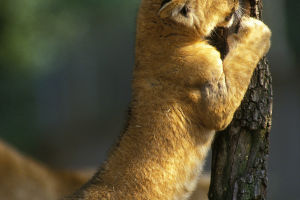The tiger, the largest of the mammalian cats, is endemic to Asia and originates mainly from North East Asia and South East Asia. The tiger is a highly evolved predator and an integral part of the natural ecology. The following is a more detailed description of the tiger from several aspects.
The Tiger's Physical Appearance
The tiger is majestic, strong, and tall, with a beautiful coat that tapers from yellow to red with dark stripes from north to south.
The head is rounded, the muzzle is wide, the eyes are large, and the mouth is bordered by a white, black, stiff whisker that is about 15cm long.
The ventral surface and the inside of the limbs are white, with a double row of black longitudinal stripes on the back.
There are about 10 black rings on the tail and a white area above the eye.
Size of the Tiger
Adult tigers can reach 2-3.5 meters in length, have a tail length of 1 meter and weigh 200-350 kg.
The size and morphology of tigers vary greatly between subspecies.
The Siberian tiger is the largest, with males reaching 3.7m in length and weighing 423kg, while females reach a maximum height of 2.4m and weigh 168kg.
Although smaller than the Siberian tiger, the male Indochinese tiger is 2.85m long and weighs 195kg.
The Sumatran tiger is the smallest living subspecies, with males measuring 2.34m and weighing 136kg, and females measuring 1.98m and weighing 91kg.
Evolution of the Tiger
The tiger evolved from an ancient period carnivore.
In the early Tertiary, there were several branches of the cat-like group of Palaeocarnivores.
One is the archaic cheetah, which evolved throughout the geological periods into the present-day cheetah.
One is the archaic saber-toothed tigers with highly specialized canine teeth.
one is the pseudo-saber-toothed tiger, which resembles the archaic saber-toothed tiger.
The last group is the Miacis.
The archaic saber-toothed and pseudo-sabretooth tigers became extinct in the early and late Tertiary, respectively, while the Miacis survived.
The tiger-like paleo-cats are the ancestors of present-day tigers.
Later, the Palaeocarnivores split into three groups: the actual cats, the dinosaurs, and the true sabra-toothed tigers.
Only the actual cats survived the Quaternary Ice Age, and have continued into the 21st century as two major groups, the cats and the leopards.
The present-day tiger is a member of the leopard group.
Varieties of the Tiger
White tiger.
Tigers are generally black on a gold background, presumably as a result of environmental adaptation, and so are rarely any other color
Snow Tiger.
A snow-white variant of the Bengal tiger, snow-white all over with light-colored stripes.
Pure White Tiger.
Only two pure white Bengal tigers have ever been born in the world. They are white all over and have no stripes.
Golden Tiger.
A golden variant of the Bengal tiger, with brown stripes on a golden background, but with lighter lines. The fur is short, except for the lighter brown and yellow stripes on the tail and inside of the limbs, which are golden in color.
Hybrids
The offspring of a male lion crossed with a female tiger is called Ligers.
The offspring of a male tiger and a female lion in captivity are called Tigons.
The offspring of a male lion and a female lion tiger is called Liligers.
Habits of Tigers.
Tigers are often solitary and only during the breeding season do males and females live together.
Each tiger has its territory.
Hobbies of Tigers.
Tigers love to swim, especially in hot areas where they enjoy bathing and playing in pools of water.
However, their tree-climbing skills are not as good as their swimming skills, presumably because they are too large and heavy.


